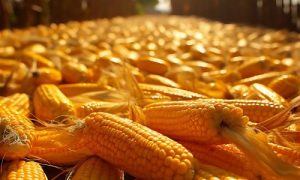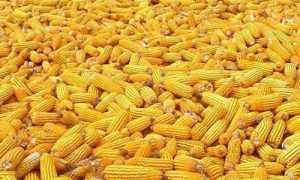Hidden Centuries Old Giant Maize Has Slime That Could Change the World

Deep in the heart of the Mexican mountains grows an ancient species of giant corn plant that grows twice as large and has strange aerial roots that drip a slime that could revolutionize agriculture and end farming reliance on toxic chemicals. For centuries, possibly even longer, the indigenous farmers have cultivated this mysterious maize that oral traditions date as over 2,000 years old.
An agricultural scientist living in Oaxaca heard tales of this super-size corn that was about sixteen to eighteen feet high, which caught his attention since American varieties max out at ten feet or so. He describes seeing it for the first time as mythical, a seemingly impossible crop kept hidden by generations of farmers that was unlike anything he had ever witnessed previously.
This corn wasn’t just giant, but also had strange protuberances extending from the stalk joints like fingers that dripped with a mucilaginous slime that was thick and viscous. These aerial roots appeared to be producing a form of self-fertilizer that provided the nitrogen rush needed for the plants to attain their fantastic giant size and meant farmers barely needed to add artificial fertilizer to the soil. The only problem being that a corn plant that produces its own nitrogen sounded like science-fiction to everybody who heard it.
The entire world population is essentially fueled by cereal grains but none of them can fix their own nitrogen levels, instead relying on what can be extracted from the soil around them, so farmers spray huge amounts of nitrogen-rich fertilizer to try and maintain steady and large yields of crops. This practice is bad for the environment and also expensive, but people need to eat so the practice continues. This new corn slime could change all of that by offering a biological hack to solve a systemic problem in our agricultural food sources.
The locals refer to this variety of ancient giant corn as olotón, but even throughout Mexico the hidden fields of this corn were basically unknown to the wider population until 1980, but it still took an additional thirty years to gather a team to study the fascinating Mexican maize. The researchers understood community involvement was vital to their success so they built the lab right there where the locals who kept this mythical plant alive could now help them study it.
The “slime” was found to contain high amounts of nitrogen-fixing bacteria usually found in the soil, but this gel the plant secretes acts as a barrier shield creating a low oxygen environment so the bacteria can convert the atmospheric nitrogen from the air into a form the plant can absorb. This allows the mythical maize to draw 80% of its required nitrogen from the air – essentially the agricultural Holy Grail.
In a disappointing display of human failure, many started to question who owns the “rights” to this corn that could change the world and added fuel to a fire known as “biopiracy”, meaning there is a misappropriation of biodiversity for research or commercial development that essentially loots the origin source, cuts out the locals, and makes a lot of money. In many cases, such as the olotón corn, the indigenous people who have cared for this crop and kept it through the centuries are telling the rest of the world this isn’t just a crop but something intrinsically linked to their culture, heritage, and lifestyles – essentially falling back on the Labor Theory of Property credited to John Locke that boils down to whomever did the work should own the fruits of their labor.
Unfortunately, this massive find is not yet being utilized because the output of the olotón can’t compete with the modern industrial scale, meaning scientists have to crossbreed it with other varieties to see if they can attain both maximum output and the nearly magical quality of self-fertilization. So far they’ve been able to halve the growing time and get nitrogen absorption up to 40% but they estimate they are probably three or four generations away from a stabilized hybrid corn. From corn it would then be a small step to adapting other cereal grains such as rice or wheat to utilize atmospheric nitrogen which would have global impacts on reducing artificial fertilizers that are damaging the ecological systems.
There is something magical about a little-known maize from a misty mountain in Mexico that has been kept alive by small scale indigenous farmers for century after century that could potentially solve world hunger that reminds us diversity isn’t something that can be separate from humanity but is, instead, vital to our survival.
















